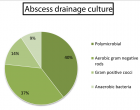Abstract
Opinion
Invasive and native woody plant encroachment: Definitions and debates
Irini Soubry* and Xulin Guo
Published: 28 July, 2022 | Volume 6 - Issue 2 | Pages: 084-086
In this short opinion piece, we discuss the appropriate use of the term ‘invasion’ for woody plant expansion and refer to the various ways in which the term is being used in the literature. We point out the present confusion and make suggestions for the use of a more appropriate term (i.e., ‘woody plant encroachment’). We continue with an overview of the various definitions of ‘woody plant encroachment in the literature, we mention associated alternative terms, and we explain the circumstances in which each of these are used. With this piece, we hope to provide more clarity on the use of correct terminology related to woody plant expansion research.
Read Full Article HTML DOI: 10.29328/journal.jpsp.1001079 Cite this Article Read Full Article PDF
References
- Moutou F, Pastoret PP. Defining an invasive species. Rev Sci Tech. 2010 Apr;29(1):37-45, 27-35, 47-56. English, French, Spanish. PMID: 20617646.
- Kim E, Song W, Yoon E, Jung H. Definition of Invasive Disturbance Species and its Influence Factor: Review. J Korea Soc Environ Restor Technol. 2016;19(1):155-1
- Soubry I, Guo X. Quantifying Woody Plant Encroachment in Grasslands: A Review on Remote Sensing Approaches. Can J Remote Sens. 2022;1-
- Archer SR, Andersen EM, Predick KI, Schwinning S, Steidl RJ, Woods SR. Woody Plant Encroachment-Causes and Concequences. In: Briske DD, editor. Rangeland Systems-Processes, Management and Challenges. Cham, Switzerland: Springer Series on Environmental Management, Springer; 2017. 25–84.
- Bond WJ, Midgley GF. A proposed CO2-controlled mechanism of woody plant invasion in grasslands and savannas. Glob Chang Biol. 2000;6(8):865-869.
- Mirik M, Chaudhuri S, Surber B, Ale S, James Ansley R. Detection of two intermixed invasive woody species using color infrared aerial imagery and the support vector machine classifier. J Appl Remote Sens. 2013;7(1):1–13.
- Van Auken OW. Causes and consequences of woody plant encroachment into western North American grasslands. J Environ Manage. 2009 Jul;90(10):2931-42. doi: 10.1016/j.jenvman.2009.04.023. Epub 2009 Jun 5. PMID: 19501450.
- Chaneton EJ, Mazia N, Batista WB, Rolhauser AG, Ghersa CM. Woody Plant Invasions in Pampa Grasslands: A Biogeographical and Community Assembly Perspective. In: Ecotones Between Forest and Grassland. New York, USA: Springer; 2012; 115–44.
- US Forest Service. Current Invasive Species Research at the Pacific Northwest (PNW) Research Station [Internet]. 2018. Available from: https://www.fs.fed.us/outernet/pnw/invasives/index.shtml
- Heisler JL, Briggs JM, Knapp AK. Long-term patterns of shrub expansion in a C4-dominated grassland: fire frequency and the dynamics of shrub cover and abundance. Am J Bot. 2003 Mar;90(3):423-8. doi: 10.3732/ajb.90.3.423. PMID: 21659135.
- Van Auken OW. Shrub Invasions of North American Semiarid Grasslands. Annu Rev Ecol Syst. 2000;31(2000):197–215.
- Burkinshaw AM, Bork EW. Shrub encroachment impacts the potential for multiple use conflicts on public land. Environ Manage. 2009 Sep;44(3):493-504. doi: 10.1007/s00267-009-9328-2. Epub 2009 Jul 9. PMID: 19588191.
- Qiao L, Zou CB, Will RE, Stebler E. Calibration of SWAT model for woody plant encroachment using paired experimental watershed data. J Hydrol. 2015;523:231-23
- Leis SA, Blocksome CE, Twidwell D, Fuhlendorf SD, Briggs JM, Sanders LD. Juniper Invasions in Grasslands: Research Needs and Intervention Strategies. Rangelands. 2017;39(2):64–72.
- Mirik M, Ansley RJ. Utility of Satellite and Aerial Images for Quantification of Canopy Cover and Infilling Rates of the Invasive Woody Species Honey Mesquite (Prosopis Glandulosa) on Rangeland. Remote Sens. 2012;4(7):1947–62.
- Ansley RJ, Cooper C, Zhang T. Invasion promotes invasion: Facilitation of C3perennial grass dominance in mixed C3/C4 grassland by an invasive C3 woody sprouter (Prosopis glandulosa). Ecol Evol. 2019 Nov 5;9(23):13438-13449. doi: 10.1002/ece3.5800. PMID: 31871656; PMCID: PMC6912915.
- Tiscornia G, Jaurena M, Baethgen W. Drivers, process, and consequences of native grassland degradation: Insights from a literature review and a survey in Río de la Plata grasslands. Agronomy. 2019;9(5):8–12.
- Hantson W, Kooistra L, Slim PA. Mapping invasive woody species in coastal dunes in the Netherlands: A remote sensing approach using LIDAR and high-resolution aerial photographs. Appl Veg Sci. 2012;15(4):536-5
- Niphadkar M, Nagendra H, Tarantino C, Adamo M, Blonda P. Comparing Pixel and Object-Based Approaches to Map an Understorey Invasive Shrub in Tropical Mixed Forests. Front Plant Sci. 2017 May 31;8:892. doi: 10.3389/fpls.2017.00892. PMID: 28620400; PMCID: PMC5450565.
- Gavier-Pizarro GI, Kuemmerle T, Hoyos LE, Stewart SI, Huebner CD, Keuler NS, et al. Monitoring the invasion of an exotic tree (Ligustrum lucidum) from 1983 to 2006 with Landsat TM/ETM+ satellite data and Support Vector Machines in Córdoba, Argentina. Remote Sens Environ. 2012;122:134-1
- Kattenborn T, Lopatin J, Förster M, Braun AC, Fassnacht FE. UAV data as alternative to field sampling to map woody invasive species based on combined Sentinel-1 and Sentinel-2 data. Remote Sens Environ. 2019;227(February):61-
- West AM, Evangelista PH, Jarnevich CS, Young NE, Stohlgren TJ, Talbert C, Talbert M, Morisette J, Anderson R. Integrating Remote Sensing with Species Distribution Models; Mapping Tamarisk Invasions Using the Software for Assisted Habitat Modeling (SAHM). J Vis Exp. 2016 Oct 11;(116):54578. doi: 10.3791/54578. PMID: 27768080; PMCID: PMC5092193.
- Diao C. Time series remote sensing in monitoring the spatio-temporal dynamics of plant invasions: a study of invasive saltcedar (Tamarix Spp.). University at Buffalo, the State University of New York; 2017.
- Mazía N, Chaneton EJ, Ghersa CM. Disturbance types, herbaceous composition, and rainfall season determine exotic tree invasion in novel grassland. Biol Invasions. 2019;21(4):1351–63.
- Kurokawa H, Peltzer DA, Wardle DA. Plant traits, leaf palatability and litter decomposability for co-occurring woody species differing in invasion status and nitrogen fixation ability. Funct Ecol. 2010;24(3):513–23.
- Leite PA, Wilcox BP, McInnes KJ. Woody plant encroachment enhances soil infiltrability of a Semiarid Savanna. Environ Res Commun. 2020;2:115005.
- Archer S, Schimel DS, Holland EA. Mechanisms of shrubland expansion: land use, climate or CO2? Clim Change. 1995;29(1):91-9
- Xiong X, Han X. Application of state and transition models to discussing the thicketization of steppe in Xilin River Basin, Inner Mongolia. Acta Prataculturae Sin. 2006;15(2):9–13.
- Eldridge DJ, Bowker MA, Maestre FT, Roger E, Reynolds JF, Whitford WG. Impacts of shrub encroachment on ecosystem structure and functioning: towards a global synthesis. Ecol Lett. 2011 Jul;14(7):709-22. doi: 10.1111/j.1461-0248.2011.01630.x. Epub 2011 May 19. PMID: 21592276; PMCID: PMC3563963.
- Archer S, Boutton TW, Hibbard KA. Trees in Grasslands: Biogeochemical Consequences Woody Plant Expansion. In: Global Biogeochemical Cycles in the Climate System. Academic Press; 2001; 115-1
- Ravi S, D’Odorico P. Post-fire resource redistribution and fertility island dynamics in shrub encroached desert grasslands: A modeling approach. Landsc Ecol. 2008;24(3):325-3
- Schreiner-McGraw AP, Vivoni ER, Ajami H, Sala OE, Throop HL, Peters DPC. Woody Plant Encroachment has a Larger Impact than Climate Change on Dryland Water Budgets. Sci Rep. 2020 May 15;10(1):8112. doi: 10.1038/s41598-020-65094-x. PMID: 32415221; PMCID: PMC7229153.
- Liao JD, Boutton TW. Soil microbial biomass response to woody plant invasion of grassland. Soil Biol Biochem. 2008;40(5):1207–16.
- Knapp AK, Briggs JM, Collins SL, Archer SR, Bret-Harte MS, Ewers BE, et al. Shrub encroachment in North American grasslands: Shifts in growth form dominance rapidly alters control of ecosystem carbon inputs. Glob Chang Biol. 2008;14(3):615–23.
- Brown JR, Archer S. Shrub invasion of grassland: Recruitment is continuous and not regulated by herbaceous biomass or density. Ecology. 1999;80(7):2385-23
- Wang G, Li J, Ravi S. A combined grazing and fire management may reverse woody shrub encroachment in desert grasslands. Landsc Ecol. 2019;34(8):2017-20
- Andersen EM, Steidl RJ. Woody plant encroachment restructures bird communities in semiarid grasslands. Biol Conserv. 2019 Dec 1;240.
- Ayers D, Melville G, Bean J, Beckers D, Ellis M, Mazzer T, et al. Woody weeds, biodiversity and landscape function in Western New South Wales. Dubbo; 2001.
- Manea A, Leishman MR. The resprouting response of co-occurring temperate woody plant and grass species to elevated [CO2]: An insight into woody plant encroachment of grasslands. Austral Ecol. 2019;44(5):917–9
- Bond WJ, Midgley GF. Carbon dioxide and the uneasy interactions of trees and savannah grasses. Philos Trans R Soc Lond B Biol Sci. 2012 Feb 19;367(1588):601-12. doi: 10.1098/rstb.2011.0182. PMID: 22232770; PMCID: PMC3248705.
- Eldridge DJ, Soliveres S, Bowker MA, Val J. Grazing dampens the positive effects of shrub encroachment on ecosystem functions in a semi-arid woodland. J Appl Ecol. 2013;50(4):1028–38.
- Delgado AS. Assessment of long-term effects of woody plant expansion in a humid, tropical grassland of Venezuela. University of Texas Rio Grande Valley; 2017.
- Watson PA, Alexander HD, Moczygemba JD. Coastal Prairie Recovery in Response to Shrub Removal Method and Degree of Shrub Encroachment. Rangel Ecol Manag. 2019;72(2):275-2
- Fitzgerald ARD, Bailey AW. Control of Aspen Regrowth by Grazing with Cattle. J Range Manag. 1984;37(2):156-15
- Moleele NM, Ringrose S, Matheson W, Vanderpost C. More woody plants? The status of bush encroachment in Botswana's grazing areas. J Environ Manage. 2002 Jan;64(1):3-11. doi: 10.1006/jema.2001.0486. PMID: 11876072.
- Oldeland J, Dorigo W, Wesuls D, Jürgens N. Mapping bush encroaching species by seasonal differences in hyperspectral imagery. Remote Sens. 2010;2(6):1416–38.
- Gil-Romera G, Turton D, Sevilla-Callejo M. Landscape change in the lower Omo valley, southwestern Ethiopia: Burning patterns and woody encroachment in the savanna. J East African Stud. 2011;5(1):108–28.
- Skowno AL, Thompson MW, Hiestermann J, Ripley B, West AG, Bond WJ. Woodland expansion in South African grassy biomes based on satellite observations (1990-2013): general patterns and potential drivers. Glob Chang Biol. 2017 Jun;23(6):2358-2369. doi: 10.1111/gcb.13529. Epub 2016 Nov 25. PMID: 27732761.
Figures:
Similar Articles
-
Impact of Calcium Phosphate Nanoparticles on Rice PlantHrishikesh Upadhyaya*,Lutfa Begum,Bishal Dey,P K Nath,S K Panda. Impact of Calcium Phosphate Nanoparticles on Rice Plant. . 2017 doi: 10.29328/journal.jpsp.1001001; 1: 001-010
-
The Effects of Pharmacological Carbonic Anhydrase Suppression on Defence Responses of Potato Leaves To Phytophthora InfestansMagdalena Arasimowicz-Jelonek*,Jolanta Floryszak-Wieczorek. The Effects of Pharmacological Carbonic Anhydrase Suppression on Defence Responses of Potato Leaves To Phytophthora Infestans. . 2017 doi: 10.29328/journal.jpsp.1001002; 1: 011-025
-
Phytochemical content of leaf and stem of Marsilea quadrifolia (L.)Rajangam Udayakumar*,Karikalan Gopalakrishnan. Phytochemical content of leaf and stem of Marsilea quadrifolia (L.). . 2017 doi: 10.29328/journal.jpsp.1001003; 1: 026-037
-
Antagonistic features displayed by Plant Growth Promoting Rhizobacteria (PGPR): A ReviewMohsin Tariq*,Muhammad Noman,Temoor Ahmed,Amir Hameed,Natasha Manzoor,Marriam Zafar. Antagonistic features displayed by Plant Growth Promoting Rhizobacteria (PGPR): A Review . . 2017 doi: 10.29328/journal.jpsp.1001004; 1: 038-043
-
Wild-type Agrobacterium rhizogenes-mediated gene transfer in plants: Agrobacterium virulence and selection of transformantsShu Wei*,Muhammad Abdullah,Ferdinand L Shamalla,Mohammad M Rana. Wild-type Agrobacterium rhizogenes-mediated gene transfer in plants: Agrobacterium virulence and selection of transformants. . 2017 doi: 10.29328/journal.jpsp.1001005; 1: 044-051
-
Effects of Vochysia haenkeana extract on the neuromuscular blockade induced by Bothrops jararaca venom on chick biventer cervicis preparation in vitroYoko Oshima-Franco*,Fernanda Dias da Silva,Natália Tribuiani,Isadora Caruso Fontana Oliveira,Regina Yuri Hashimoto Miura,Rafael S Floriano,Márcio Galdino dos Santos,Sandro Rostelato-Ferreira. Effects of Vochysia haenkeana extract on the neuromuscular blockade induced by Bothrops jararaca venom on chick biventer cervicis preparation in vitro. . 2017 doi: 10.29328/journal.jpsp.1001006; 1: 052-058
-
HBV: Genomic Structure, HBVsAg Isolation and innovative Virotherapy Initiation in the Middle EastAboul-Ata E Aboul-Ata*,Essam M Janahi,I M El-Kalamawy,Kathleen Hefferon,Amal Mahmoud. HBV: Genomic Structure, HBVsAg Isolation and innovative Virotherapy Initiation in the Middle East . . 2017 doi: 10.29328/journal.jpsp.1001007; 1: 059-061
-
Physiological impact of Zinc nanoparticle on germination of rice (Oryza sativa L) seedUpadhyaya H*,Roy H,Shome S,Tewari S,Bhattacharya MK,Panda SK. Physiological impact of Zinc nanoparticle on germination of rice (Oryza sativa L) seed . . 2017 doi: 10.29328/journal.jpsp.1001008; 1: 062-070
-
Effects of Site Factors on the Clonal Growth of Phyllostachys bambusoides f. shouzhu YiXiaohong Gan*,Lijuan Chen,Cuibin Tang,Xia Zhang. Effects of Site Factors on the Clonal Growth of Phyllostachys bambusoides f. shouzhu Yi. . 2017 doi: 10.29328/journal.jpsp.1001009; 1: 071-079
-
Evaluation of genetic diversity in germplasm of paprika (Capsicum spp.) using random amplified polymorphic DNA (RAPD) markersRueda-Puente EO*,Renganathan P,Ruíz-Alvarado C,Hernández-Montiel LG,Prasath Duraisamy. Evaluation of genetic diversity in germplasm of paprika (Capsicum spp.) using random amplified polymorphic DNA (RAPD) markers. . 2017 doi: 10.29328/journal.jpsp.1001010; 1: 080-086
Recently Viewed
-
Crime Scene Examination of Murder CaseSubhash Chandra*,Pradeep KR,Jitendra P Kait,SK Gupta,Deepa Verma. Crime Scene Examination of Murder Case. J Forensic Sci Res. 2024: doi: 10.29328/journal.jfsr.1001071; 8: 108-110
-
Beta-1 Receptor (β1) in the Heart Specific Indicate to StereoselectivityRezk Rezk Ayyad*, Ahmed Mohamed Mansour, Ahmed Mohamed Nejm, Yasser Abdel Allem Hassan, Norhan Hassan Gabr, Ahmed Rezk Ayyad. Beta-1 Receptor (β1) in the Heart Specific Indicate to Stereoselectivity. Arch Pharm Pharma Sci. 2024: doi: 10.29328/journal.apps.1001060; 8: 082-088
-
Pattern of LRR in Endometrial Cancer and Identification of Predictive FactorsAlia Mousli, Mohamed Aziz Cherif*, Marouen Benna, Ameni Yousfi, Semia Zaraa, Rim Abidi, Chiraz Nasr. Pattern of LRR in Endometrial Cancer and Identification of Predictive Factors. Clin J Obstet Gynecol. 2024: doi: 10.29328/journal.cjog.1001169; 7: 078-083
-
Effect of Azithromycin on Lung Function and Pulmonary Exacerbations in Children with Post-infectious Bronchiolitis Obliterans. A Double-blind, Placebo-controlled TrialCastaños Claudio*, Salin Maximiliano Felix, Pereyra Carla Luciana, Aguerre Veronica, Lucero Maria Belen, Bauer Gabriela, Zylbersztajn Brenda, Leviled Leonor, Gonzalez Pena Hebe. Effect of Azithromycin on Lung Function and Pulmonary Exacerbations in Children with Post-infectious Bronchiolitis Obliterans. A Double-blind, Placebo-controlled Trial. J Pulmonol Respir Res. 2024: doi: 10.29328/journal.jprr.1001052; 8: 009-014
-
Pituitary gland metastasis from breast cancer: case reportMohamed Almadhoni,Mohamed Ali Baggas*. Pituitary gland metastasis from breast cancer: case report. Arch Cancer Sci Ther. 2022: doi: 10.29328/journal.acst.1001025; 6: 001-003
Most Viewed
-
Evaluation of Biostimulants Based on Recovered Protein Hydrolysates from Animal By-products as Plant Growth EnhancersH Pérez-Aguilar*, M Lacruz-Asaro, F Arán-Ais. Evaluation of Biostimulants Based on Recovered Protein Hydrolysates from Animal By-products as Plant Growth Enhancers. J Plant Sci Phytopathol. 2023 doi: 10.29328/journal.jpsp.1001104; 7: 042-047
-
Sinonasal Myxoma Extending into the Orbit in a 4-Year Old: A Case PresentationJulian A Purrinos*, Ramzi Younis. Sinonasal Myxoma Extending into the Orbit in a 4-Year Old: A Case Presentation. Arch Case Rep. 2024 doi: 10.29328/journal.acr.1001099; 8: 075-077
-
Feasibility study of magnetic sensing for detecting single-neuron action potentialsDenis Tonini,Kai Wu,Renata Saha,Jian-Ping Wang*. Feasibility study of magnetic sensing for detecting single-neuron action potentials. Ann Biomed Sci Eng. 2022 doi: 10.29328/journal.abse.1001018; 6: 019-029
-
Physical activity can change the physiological and psychological circumstances during COVID-19 pandemic: A narrative reviewKhashayar Maroufi*. Physical activity can change the physiological and psychological circumstances during COVID-19 pandemic: A narrative review. J Sports Med Ther. 2021 doi: 10.29328/journal.jsmt.1001051; 6: 001-007
-
Pediatric Dysgerminoma: Unveiling a Rare Ovarian TumorFaten Limaiem*, Khalil Saffar, Ahmed Halouani. Pediatric Dysgerminoma: Unveiling a Rare Ovarian Tumor. Arch Case Rep. 2024 doi: 10.29328/journal.acr.1001087; 8: 010-013

HSPI: We're glad you're here. Please click "create a new Query" if you are a new visitor to our website and need further information from us.
If you are already a member of our network and need to keep track of any developments regarding a question you have already submitted, click "take me to my Query."























































































































































